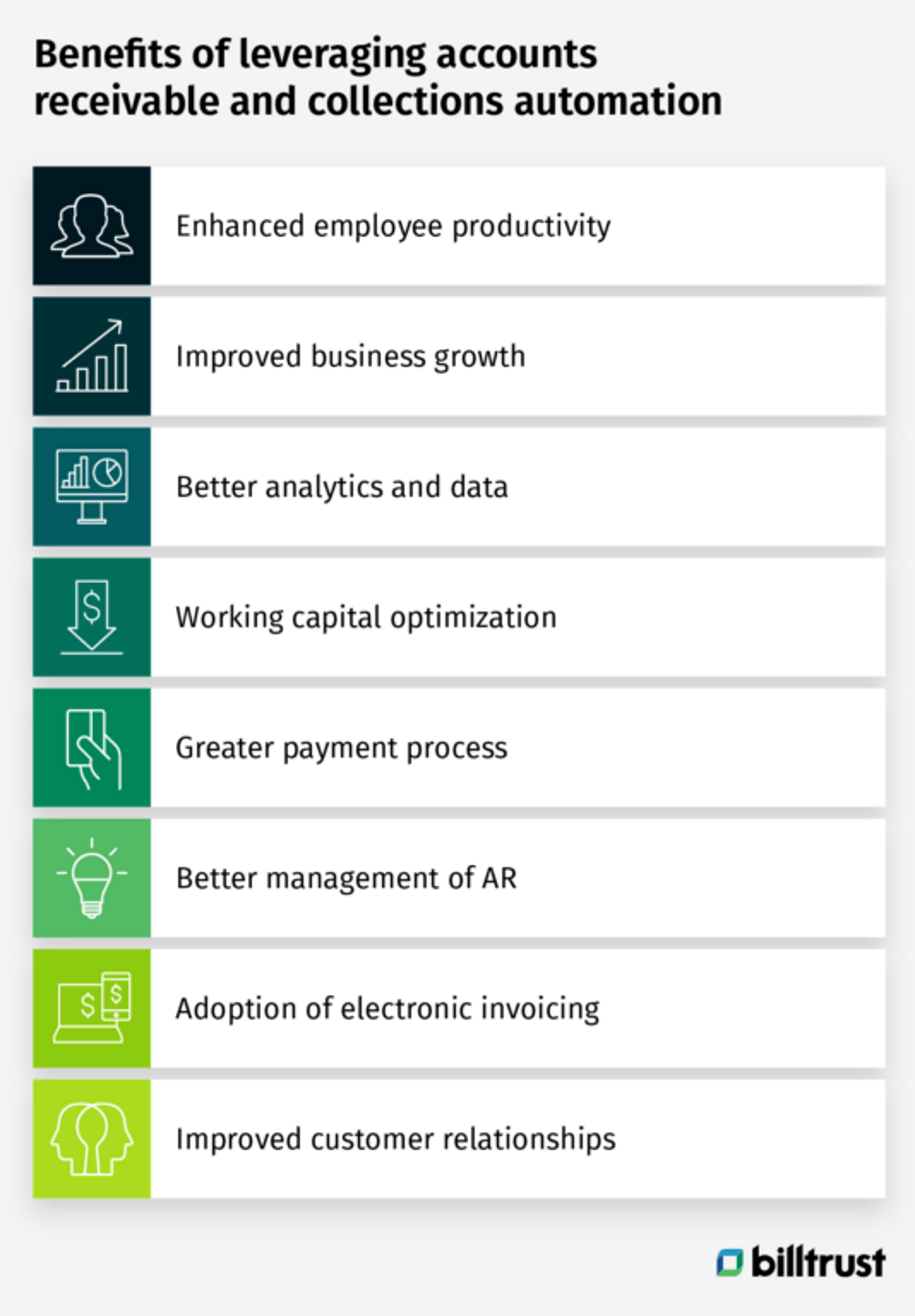Have you ever found money on the ground while walking? Or maybe you reached into your coat pocket and pulled out $25 that you forgot about. Whatever the case may be, your newfound cash brings you utter happiness. It's the same with businesses when they discover other available sources of cash or underused budgets, which may mean the difference between staying open or closing the doors. Underutilized budgets may be a rare find, but most businesses have a source of capital–found money, if you will–they often overlook: accounts receivable (AR).
Why is accounts receivable like striking gold?

Covid-19 impacted companies' liquidity across industries around the globe, and most C-suite leaders realized the importance of accounts receivable (AR) and the collection process and how it makes a significant impact on the bottom line. According to a 2019 analysis by PYMNTs.com and Fundbox, it was revealed that $3 trillion was confined to a business's accounts receivable outstanding.
Companies must look at their AR processes because the more found money and cash flow they have, the better. Funds (or found money) could be used to improve technologies, including implementing accounts receivable automation. More cash (more found money) means more opportunities for research and development (R&D) to enhance current products or create new ones. Businesses looking for investors can defer rounds of funding due to an increase in cash flow because of the improvement to accounts receivable collections.
Remember that most businesses offer the flexibility of allowing customers to buy goods and services on credit. But without efficient accounts receivable (AR), many companies won’t survive. And since the AR and collections process can be slow because of manual processes, the amount of cash owed to businesses is often delayed or unclaimed.
The slow evolution of AR
During the pre-and post-industrial revolution, businesses continued to do business on credit. Banks and debt collectors used handwritten ledgers and dunning letters. Today, chief financial officers (CFOs) in every industry have AR processes and collections processes in place. However, many companies still rely on manual processes, which slows down cash flow.
Collections and accounts receivable teams can focus on more critical tasks
Other departments like IT and marketing are often at the center of innovation. However, accounts receivable, and collections remain incredibly manual. Because of focusing on automating other departments, many accounting teams struggle to implement automation software into their collections and AR. Since companies don’t have modernized AR processes and forward-thinking accounts receivable management, managing and tracking payments become a struggle for employees who have to track payments from customers manually.
Because of the high degree of human contact between businesses and their customers, some believe that collections and AR automation may be difficult to incorporate. But CFOs, controllers, and accounting and collections managers may prefer to have their staff focus on value-added activities instead of administrative tasks, including follow-ups and communication with customers and data reconciliation.

Automating your accounts receivable and collections process with AR software frees up time so that your teams can focus on investigating irregularities and creating decision-friendly financial reports. Shifting them from manual tasks to more strategic responsibilities can improve workflows. Plus, the data provided can be used to analyze customers’ payment behavior which may reveal patterns you can address.
Companies can no longer ignore artificial intelligence (AI) and data–they’ve become integral to organizations. Automation processes many lines of data, and employees make sense of it. Instead of having your accounts receivable specialists sort through hundreds or thousands of cells within an old-school spreadsheet, they can focus on spotting trends. Once identified, AR specialists can report on business strategies that may impact a company’s bottom line.
Benefits of leveraging accounts receivable and collections automation
Companies that leverage AR software can help their businesses receive the following benefits.

Enhanced employee productivity
Accounts receivable and collections teams will be freed from their manual tasks and increase their productivity over time. Automation allows for AR and collections departments to focus on more value-driven activities.
Improved business growth
Reducing the time it takes to collect from customers can stimulate and improve cash flow. The found money can be used for business growth, including purchasing new equipment and investing in employee training programs.
Better analytics and data
With AR software, employees no longer need to spend most of their time inputting data. They can make detailed business recommendations by analyzing the information returned. They can identify profitable customers, those likely to pay late and which products or services have the most disputes, etc.
Working capital optimization
Reducing days sales outstanding (DSO) allows companies to reinvest capital into the business, contributing to growth. It also minimizes any interest paid on external working capital.
Greater payment process
Accounts receivable automation allows you to accept your customers’ preferred payments more efficiently. It makes the cash application process more manageable. Plus, you can save on the costs associated with accepting virtual credit card payments.
Better management of AR
Integrated accounts receivable solutions can give AR professionals greater control and insights into their accounts. It can also generate reports, alert you to issues that need immediate attention and display statuses and provide a centralized repository for customer invoices.
Adoption of electronic invoicing
Many of your customers may already accept electronic invoices, so why not encourage them to get them from your business? AR automation can analyze your current customer base and determine which ones receive e-invoices from other suppliers. They can be encouraged to receive electronic invoicing from your business too.
Improved customers relationships
Because automated accounting AR software does most of the “grunt work,” accounting and collections teams can focus on building relationships with customers. For example, if your collections team has spent most of their time trying to collect payments, or if your accounts receivable (AR) team has been trying to get the correct payment information, they can focus on creating stronger relationships with customers. Your accounts receivable team can inform customers about fee increases or that credit card information is about to expire. They can also remind customers of upcoming deadlines because AR automation software can spot trends and encourage customers to make payments on time.
Wrapping up accounts receivable is found money
Integrated receivables automation can use machine learning (ML) and AI to automate the most complex tasks, produce robust cash flows and create process transparency. AR automation can turn the manual administrative process into a business driver. At the same time, predictive algorithms can generate suggestions about where accounts receivable specialists should focus their efforts or approach issues in their work. With this newfound money, businesses can build a healthy cash position necessary for any growing company.

